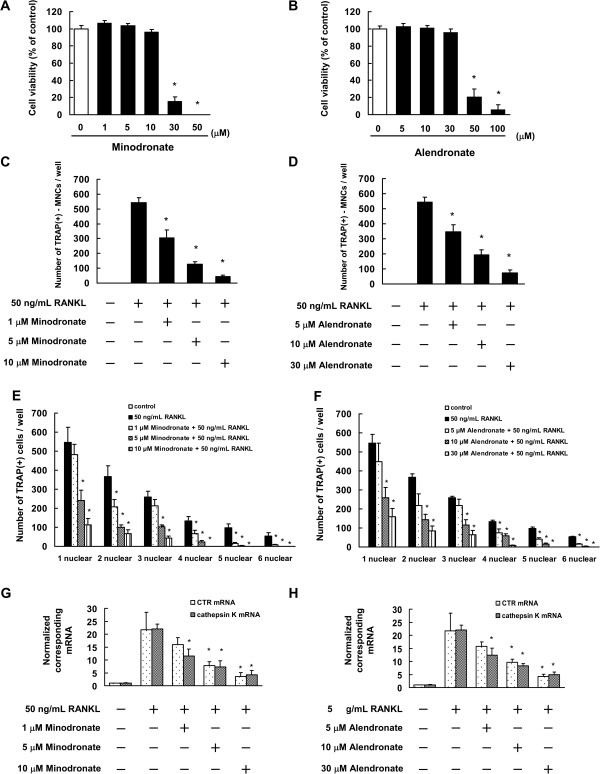Figure 2.
Minodronate and alendronate inhibited osteoclast formation in RAW264.7 cells. (A, B) Determination of the appropriate concentrations of minodronate (A) and alendronate (B) that are not cytotoxic to RAW264.7 cells. Cells (5000 cells/well) were incubated in 96-well plates for 24 h and then treated with various concentrations of minodronate and alendronate. After 7 days, cell viability was quantified by conducting WST-8 assays. The results are representative of 4 independent experiments. *P < 0.01 compared to the controls. (C-F) Inhibition of osteoclast formation by minodronate and alendronate. RAW264.7 cells were cultured for 12 days and then treated with 1, 5, or 10 μM minodronate (C, E) or 5, 10, or 20 μM alendronate (D, F). Cells were cultured in the presence of 50 ng/mL RANKL. Cultures were fed every 2 days by replacing with 500 μL of fresh medium, with or without minodronate, alendronate, and RANKL. Cultures were fixed and stained for TRAP-positive multinucleated cells (C, D), and TRAP-positive cells (E, F) per well was counted. These results are representative of 4 independent experiments. *P < 0.01 compared to 50 ng/mL RANKL administration. (G, H) Inhibitory effect of minodronate and alendronate on RANKL and M-CSF-induced CTR and cathepsin K mRNA expression. RAW264.7 cells were treated with minodronate (G) and alendronate (H) with 50 ng/mL RANKL for 7 days. Total RNA was extracted, and the CTR and cathepsin K mRNA levels were determined by real-time PCR. The results are expressed as the ratio of treated to control samples after normalization to GAPDH mRNA levels. The results are representative of 4 independent experiments. *P < 0.01 compared to 50 ng/mL RANKL administration.

